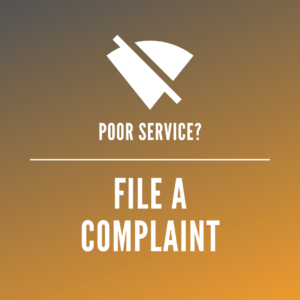The radio spectrum consists of a finite number of frequencies, typically with only one signal being able to be transmitted on a given frequency (if two users attempt to transmit on the same frequency in close proximity to each other, interference may occur). Therefore, to accommodate the large number of persons using the radio spectrum with minimum interference, the spectrum must be regulated and managed.
There are varying rules and regulations concerning the management of the spectrum in different parts of the world, however, one of the general practices is to divide the radio frequency spectrum into a number of frequency bands and designate the general purposes /services for which each band may be utilized.
This process is referred to as the allocation of frequency bands to radiocommunication services.
Example: In SVG, 25.070MHz– 25.210MHz is assigned to Maritime Mobile.
The allocation of services to frequency bands helps the regulator to, among other things, (1) assign frequencies to users based on the service required and (2) narrow down potential causes of interference.
Click here to view list of all Frequency Allocations for St. Vincent and the Grenadines.
The St. Vincent & the Grenadines Telecommunications Act states that the Commission will “plan, supervise, regulate and manage the use of the radio frequency spectrum in conjunction with ECTEL.”
The NTRC is responsible for the issuing of licenses and frequency authorisations throughout SVG. In order to start transmitting any form of radio waves on any given frequency, an individual must own a service license and a frequency authorization for the frequency. This can be achieved by either (1) applying for a service license and a frequency authorization at the same time, or (2) owning a service license after which a frequency authorization can be applied for.
Service licence fees are due annually while frequency authorization fees are due each quarter.
The NTRC has the task of deciding the most appropriate frequencies to be issued to applicants. This is primarily based on the availability of frequencies within the allocation, as well as the desired frequency of the applicant.
The NTRC is also responsible for monitoring the use of radio frequencies in Saint Vincent and the Grenadines in order to ensure that holders of frequency authorisations comply with the conditions, regulations and terms of the authorisations.
The NTRC has the power to withdraw or suspend any emission where it considers it necessary to do so, and to manage and control the use of the electromagnetic spectrum from, to and within St. Vincent and the Grenadines.
More information about the management of the spectrum, and the role of the NTRC can be found by downloading the Spectrum Management Regulations.
The principal mechanisms for managing the spectrum are the Spectrum Management Regulations and the Regional Spectrum Plan. The management of the spectrum in St. Vincent and the Grenadines follows a harmonized approach with the other Contracting States. By signing the ECTEL Treaty, these states have harmonized their Telecommunications Acts and regulations, including the Spectrum Management Regulations.
The Spectrum Management Regulations is a document developed to be used in conjuction with the Telecommunications Act. These regulations outline the role, responsibilities and powers of ECTEL and the Commission with regard to the spectrum, and also the necessary procedures, guidelines, and obligations involved. The document gives information on how the spectrum should be managed, focussing on the functions of the Commission in monitoring and managing the resource, and guidelines for assigning frequencies. It also defines the powers that the Commission has to enforce these rules, and to limit the occurrence of harmful interference.
The Regional Spectrum Plan defines how the spectrum shall be used and includes the regional frequency allocation table.
To help manage the spectrum, the NTRC uses sensitive equipment, and powerful spectrum analyzing / monitoring and management software. Monitoring can be done using equipment located on the premises, however, most monitoring is done by the use of a mobile monitoring system equipped with antennas and receivers that can be used to monitor and analyze the radio frequency to ensure that spectrum users comply with the terms and conditions of their licences.
Related Information
Applying for a Frequency Authorisation
To apply for a frequency authorisation, interested persons may collect application forms from the NTRC, or by downloading the application form available here.
Note: (If not already owned) An individual must also apply for the relevant service license, such as a FM Radio Broadcast License or a Public Mobile Telecommunications License when applying for a Frequency Authorisation.
Harmful Interference
It is the responsibility of the licensee to ensure that their equipment does not produce emissions outside of the assigned frequency. As such, special filters and other additional equipment may need to be purchased and installed in order to prevent interference to other frequencies on the spectrum. A licensee that fails to do so can have its authorisation suspended or revoked.
Filing a complaint
Occassionally, some radio waves may cause interference to other users of the spectrum. The NTRC does weekly monitoring to try to ensure that all licensees stay within specifications, however, there are instances where the problem can be resolved more quickly by filing a complaint to the NTRC.
Make a complaint by contacting the NTRC at 784-457-2279.
More serious complaints can be filed by following the processes described at File Complaint.



